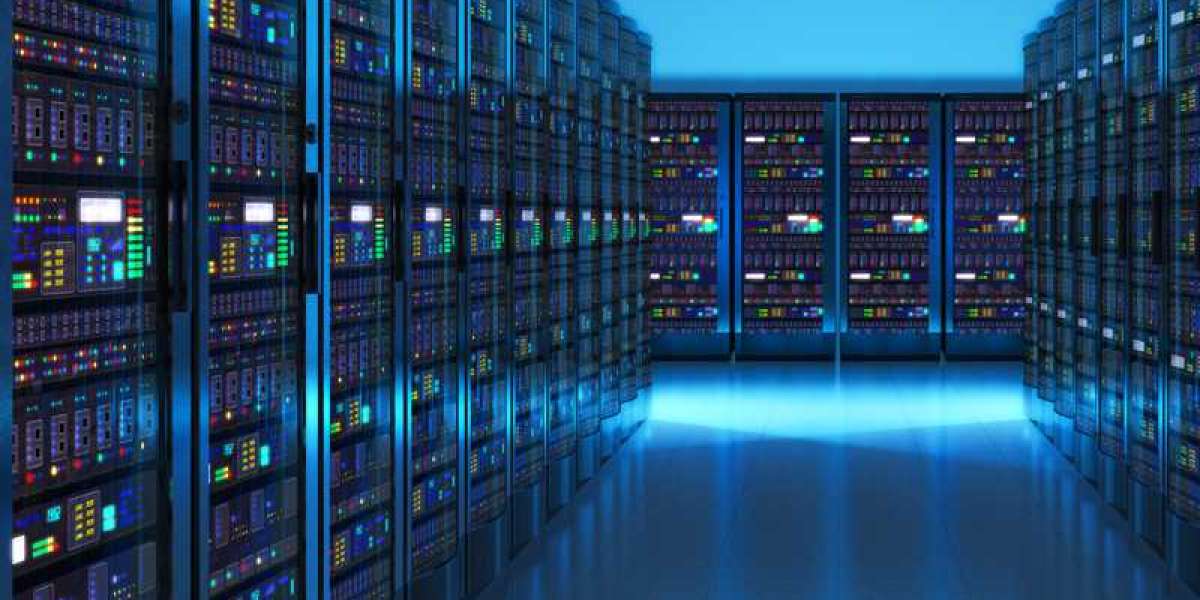In today’s digital economy, data centers are the backbone of numerous industries, enabling cloud services, storage, and computing power for everything from small startups to massive multinational corporations. One of the key components making this possible is the data center transceiver—a critical device in the overall infrastructure of data centers, enabling high-speed data transmission across various networks. The data center transceiver market is growing rapidly, driven by the surging demand for data processing, cloud computing, and advancements in communication technology.
In this blog, we will explore the major trends, market drivers, and challenges facing the data center transceiver market, as well as key technologies shaping its future.
- What Are Data Center Transceivers?
A transceiver is a device that can both transmit and receive signals. In the context of data centers, transceivers act as bridges between servers and network devices, converting electrical signals into optical signals and vice versa to facilitate high-speed data transfer across networks. These devices come in various form factors such as SFP+ (Small Form-Factor Pluggable Plus), QSFP (Quad Small Form-Factor Pluggable), and CFP (C Form-Factor Pluggable), depending on the required data rates and distances.
- Key Market Trends
Growing Adoption of 100G, 200G, and 400G Transceivers
With the exponential rise in data traffic driven by video streaming, social media, and cloud services, data centers are increasingly transitioning from 10G and 40G transceivers to 100G, 200G, and even 400G solutions. These higher-speed transceivers offer enhanced bandwidth capabilities, enabling more efficient data transfer over longer distances, which is critical in hyper-scale data centers and multi-tenant environments.
Shift Toward Optical Interconnects
As data centers scale up, copper cables are becoming less feasible due to limitations in distance and data speed. There’s a clear trend toward optical interconnects, which offer higher bandwidth, lower latency, and reduced energy consumption compared to their copper counterparts. This shift is particularly important for hyperscale data centers, where the demand for low-latency, high-bandwidth networks is paramount.
Get PDF Sample Copy Of this Report here:
https://www.wiseguyreports.com/sample-request?id=547102
Growing Demand for Edge Data Centers
With the growth of technologies like IoT (Internet of Things), 5G networks, and autonomous systems, edge data centers are becoming increasingly popular. These smaller, localized data centers process data closer to the source, reducing latency and improving performance. The growing demand for edge computing is fueling the need for compact, energy-efficient transceivers designed for smaller-scale, distributed networks.
Transition to Coherent Optics
In order to keep pace with the rapidly increasing demand for bandwidth, many data centers are beginning to adopt coherent optics technology. Coherent optics enables data transmission at significantly higher capacities (e.g., 400G, 800G, and even 1.6T) using advanced modulation techniques. This technology is especially important for long-haul data transmission between geographically dispersed data centers.
- Market Drivers
Surge in Cloud Computing
Cloud computing has seen unprecedented growth over the past decade, with more businesses migrating their applications and data to the cloud. The global demand for cloud services drives the need for more data centers and, in turn, for more transceivers to manage the data flow efficiently.
Increased Data Traffic from AI and Big Data
AI-driven applications and big data analytics generate massive amounts of data that require swift and seamless transmission across networks. Data center operators are investing in high-speed transceivers to ensure that they can meet the demands of data-intensive applications without performance bottlenecks.
5G Rollout and IoT Expansion
As 5G networks expand globally, they are expected to dramatically increase data traffic, placing further pressure on data centers to support faster speeds and lower latencies. Additionally, IoT devices create an abundance of data that needs to be processed in real-time, pushing the demand for data center transceivers that can handle these requirements.
Government Initiatives and Green Data Centers
Sustainability is becoming a priority for data centers, with governments and organizations aiming to reduce carbon footprints and energy consumption. Optical transceivers, which consume less power compared to traditional copper-based solutions, are helping data centers meet their energy efficiency goals while maintaining high-performance levels.
- Challenges Facing the Market
High Cost of Advanced Transceivers
While advanced transceivers such as 400G offer higher speeds and more efficient data handling, their cost can be prohibitive for smaller data centers or organizations with limited budgets. This has slowed adoption rates among some users, despite the benefits.
Complexity in Upgrading Legacy Systems
Many data centers still rely on legacy network infrastructure that isn’t compatible with the latest high-speed transceivers. Transitioning from older systems to modern optical solutions can be both costly and complex, often requiring significant overhauls in network design and architecture.
Supply Chain Disruptions
Like many other tech sectors, the data center transceiver market has been affected by global supply chain disruptions, particularly in the wake of the COVID-19 pandemic. Component shortages and manufacturing delays have led to longer lead times and increased costs, impacting the market's growth potential.
- Future Outlook: What’s Next?
The data center transceiver market is expected to continue its robust growth, driven by the ongoing expansion of cloud services, the deployment of 5G networks, and the increasing use of AI and big data applications. As technology continues to advance, we can expect to see the following developments:
- 800G and 1.6T Transceivers: With the rise of AI-driven workloads and big data analytics, even 400G transceivers may eventually struggle to keep up. The next generation of transceivers, operating at 800G and 1.6T, will offer even greater speeds and efficiency for data centers.
- Integration of Photonic Chips: Silicon photonics technology, which integrates photonic chips directly into electronic devices, is set to revolutionize the data center transceiver market. This technology promises to deliver higher data speeds, lower energy consumption, and reduced heat generation.
- AI-Driven Network Management: AI and machine learning will increasingly be used to manage data center networks, optimizing bandwidth allocation, reducing latency, and improving energy efficiency. This will further drive demand for intelligent transceiver solutions that can dynamically adjust to network conditions.
Conclusion
The data center transceiver market is poised for significant growth in the coming years, thanks to the expanding cloud computing landscape, the rollout of 5G, and the increasing demand for high-speed data transmission. While challenges such as cost and legacy system integration remain, advancements in technology like coherent optics and silicon photonics promise to drive the market forward. Businesses and data center operators must stay ahead of these trends to remain competitive in a rapidly evolving digital world.
Access complete report here:
https://www.wiseguyreports.com/reports/data-center-transceiver-market
More Reports:
serial to ethernet converters Market
https://www.wiseguyreports.com/reports/serial-to-ethernet-converters-market
unshielded twisted pair cables Market
https://www.wiseguyreports.com/reports/unshielded-twisted-pair-cables-market
coax to ethernet adapters Market
https://www.wiseguyreports.com/reports/coax-to-ethernet-adapters-market
three anti mobile phone Market
https://www.wiseguyreports.com/reports/three-anti-mobile-phone-market
ai inference server Market
https://www.wiseguyreports.com/reports/ai-inference-server-market
airplane intercom Market
https://www.wiseguyreports.com/reports/airplane-intercom-market
managed switches and unmanaged switches Market
https://www.wiseguyreports.com/reports/managed-switches-and-unmanaged-switches-market
uhf radio transceivers Market
https://www.wiseguyreports.com/reports/uhf-radio-transceivers-market
edge computing device Market
https://www.wiseguyreports.com/reports/edge-computing-device-market
business wifi routers Market
https://www.wiseguyreports.com/reports/business-wifi-routers-market
marine walkie talkie Market
https://www.wiseguyreports.com/reports/marine-walkie-talkie-market
cyber security situational awareness Market
https://www.wiseguyreports.com/reports/cyber-security-situational-awareness-market







